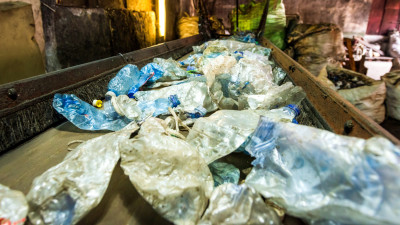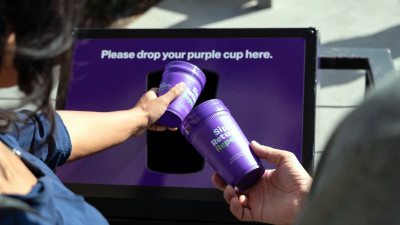It’s time to face the facts. By 2030, we will consume 102 million tons of apparel per year, an increase of 63 percent from 2017. And by 2050, the global-fashion industry will consume a quarter of the world’s annual carbon budget — which represents the quantity of greenhouse gas emissions that can be emitted to keep climate change “tolerable.”
The Case for Change:
Why We Need to Address Our Clothing Footprint Now
It’s time to face the facts. By 2030, we will consume 102 million tons of apparel per year, an increase of 63 percent from 2017. And by 2050, the global-fashion industry will consume a quarter of the world’s annual carbon budget — which represents the quantity of greenhouse gas emissions that can be emitted to keep climate change “tolerable.”
This is our fault. Every single one of us. We all participate in the fashion industry — from manufacturing to shopping to disposal. And our involvement is getting more and more destructive. We are living in a take, make and dispose culture where the average piece of clothing bought at a fast-fashion store is thrown out in a year or less, and a garbage truck full of textiles is dumped into landfills every second, and where something we use every day — clothing — cannot be recycled in an effective manner.
A recent study published by Vancouver waste-service specialists Karen Storry and Andrea McKenzie finds that apparel waste is one of the fastest-growing waste streams in the world. The report suggests stakeholders from the apparel and waste management industries work together to solve their shared challenge. We are starting to see these collaborations come to life and it truly gives me hope. But the other side to this story is the consumer, who must also be actively engaged to solve this problem.
Large companies are not the only stakeholders that should be embracing circular fashion. This movement advocates recycling textiles on several levels — from being bought secondhand, to being completely recycled and used to make something new. I believe we can make the transition from fast fashion to circular fashion, if stakeholders work together. And as citizens of the world — we are all stakeholders.
The biggest culprit: Lack of awareness in a fast-fashion world
While these solutions seem easy enough, there is a major obstacle — awareness. The Environmental Protection Agency estimates that nearly seven times more apparel and footwear waste was put into landfills and incinerators than recycled in 2013. And that was as recent as five years ago — the number has likely grown since then. This means brands, retailers and consumers may not understand the various options they have to curb apparel waste.
The Savers® 2018 State of Reuse Report found that nearly one in five North Americans still throw reusable goods in the trash and only about 30 percent of North Americans buy used goods once every few months, thus missing out on the full cycle of reuse. Understanding how we contribute to apparel waste is the first step in making a conscious effort to support a circular-fashion model.
An accessible launch pad for a circular future
So, how can we make fashion circular? We can encourage consumers to think about secondhand shopping as an easy and affordable way to lower their overall footprint. In fact, a recent Deal News article found that U.S. thrifters saved $7 billion in 2017 by shopping secondhand. But if they choose to buy new, there needs to be a greater effort to provide them with options to shop at socially conscious brands that manufacture durable items and are moving toward a more circular economy.
But until then, I encourage us all to practice circular fashion. We don’t have to spin our sweaters into blankets — just promote the reuse of clothing. Think critically about how we can support and elevate our commitment to a circular economy. You might be surprised how easy and rewarding it is to contribute to a more sustainable and circular future.








